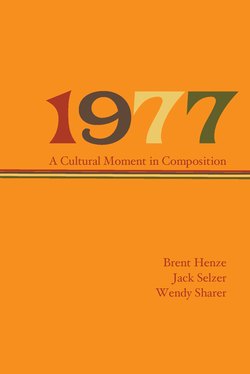Читать книгу 1977 - Brent Henze - Страница 11
На сайте Литреса книга снята с продажи.
ОглавлениеSidebar: The Birth of TOPOI
Hugh Burns
In just 1977, when the world was more analog than digital, before word processors had replaced typewriters, when consultants were paid big bucks to explain the differences between hardware and software, I started programming computers.
Two years before, the United States Congress had created a line item in the personnel budget of the United States Air Force Academy mandating that the Department of Defense authorize one “slot” for a certified doctoral rhetorician to direct composition and speech courses in Colorado Springs so that future Air Force generals would not receive poorly reasoned, poorly edited, and massively stupid letters from second lieutenants—or so I was told.
In any event I was ordered to conclude my duties as a detachment Commander outfitted in fatigues on the eleven-square mile island of Ie Shima in the middle of the East China Sea and to PCS (permanently change station) to the University of Texas at Austin to complete a PhD in rhetoric—before returning to the USAF Academy as Course Director of Composition and Speech. In January 1977, I arrived on the spacious forty acres at the University of Texas at Austin and began my doctoral program.
On a Monday in January, I attended my first rhetoric course—and my first computer science course. By day and in a well-window-lit seminar room, I was led by James L. Kinneavy through Aristotle’s Rhetoric, chapter by chapter, proof by proof, enthymeme by enthymeme, counterpart by counterpart, to recover the wonders of heuristics and the available designs of verbal reasoning about uncertainty. By night and in an underground computing center, I was guided by George H. Culp loop-by-loop, string-by-string, and if-then-by-goto-statement, to discover the delights of algorithms and the available designs of mathematical reasoning about certainty. For weeks, sealed up in the basement of UT’s Parlin Hall between book cases and working with two dumb terminals hardwired (thanks to Susan Wittig’s National Science Foundation Grant) to a Digital DEC-10 mainframe computer in the Humanities Research Center off Guadalupe drag, I wrote computer programs that “knew” the answers to every clever multiple-choice or true-false question I could think to ask about English grammar and American literature. I programmed software to respond either “Correct” or “Incorrect” to such questions as “True or false? The principal principle for principals principally is to be principled.” Then, just as the blue bonnets started painting the Texas hill country, I had an idea: what if computers were stupid and humans were smart, what would happen?
In other words, what if the principal principles of designing computer-assisted instruction were not certain? What would happen if, following Aristotle’s first enthymeme topic in his Rhetoric about considering opposites, I started programming computers not to “know” the correct answer it transmitted to the green CRT screen? Would users suspend disbelief? Would my punch cards be bent, mutilated, or torn? Would my graduate committee allow me to bring an analytical engine into Parlin Hall’s humanities garden? Would I have any friends outside of this basement? Would I graduate? Would I eventually prevent second lieutenants from sending poorly reasoned, poorly edited, and massively stupid letters to three-star generals? Would, more importantly, writers invent better arguments, find better evidence, and truly search for the available means of persuasion?
And so it happened. In 1977, I wrote a computer program called TOPOI. The program invited writers to answer open-ended questions derived from Aristotle’s twenty-eight enthymemes on topics of their choice. I programmed in BASIC and the computer did what I asked it to do: stimulate one writer at a time to discover, recover, wonder, or think about their definitions and key terms; their reasons to trust, their explanations, and their specific details; their private opinions, their public perceptions, their causes and effects; their costs, conditions, and better ways; their responsibilities to research in libraries, archives, and even books. There was no time limit. There was no final score. There was no right answer. There was only a close encounter of the rhetorical invention kind. There were only questions. A dissertation followed.
In 1977, I first asked not what my students could do for me on a dumb terminal, but what I could do for my students with all the available means of technology. In 1977, I learned that I could program a computer to be artificially intelligent, and I was proud of it. In 1977, with a deeper sense of purpose and audience, I began to teach by asking students what they thought about, what they wanted to say, what they wanted write about, and what they wanted to do for others.
True or false? A principal pioneering computational rhetorician is still asking questions and still investigating human creativity, humane consciousness, and harmonious chaos.
